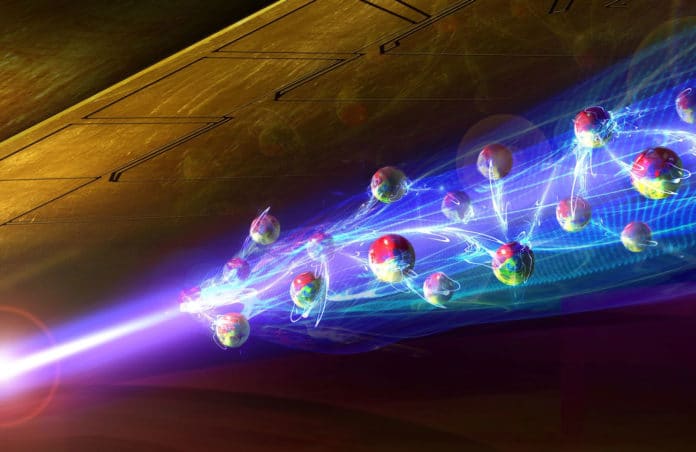Through a laser beam, the polarization of atoms is possible so that they can become positively charged on one side and negatively charged on the other. As a result, they are drawn to one another, creating a unique bonding state that is significantly weaker than the link between two atoms in a specific molecule but yet quantifiable. The laser beam, which can be thought of as a “molecule” of light and matter, in a way gives the polarised atoms the power to attract one another.
This phenomenon has long been anticipated theoretically, but researchers at the University of Innsbruck and the Vienna Center for Quantum Science and Technology (VCQ) at TU Wien have now achieved the first measurement of this unusual atomic connection. They created a very special bonding state between atoms in the laboratory for the first time. This interaction can be used to manipulate very cold atoms and may also impact how molecules form in space.
Prof. Philipp Haslinger, whose research at the Atominstitut at TU Wien is supported by the FWF START program, said, “In an electrically neutral atom, a positively charged atomic nucleus is surrounded by negatively charged electrons, which surround the atomic nucleus much like a cloud. If you now switch on an external electric field, this charge distribution shifts a little.”
“The positive charge is shifted slightly in one direction, the negative charge slightly in the other direction, the atom suddenly has a positive and a negative side, polarised.”
Creating a polarisation effect with laser light is possible as light is just an electromagnetic field that changes rapidly. The light polarises all the atoms (when placed next to each other) in the same way- positive on the left and negative on the right, or vice versa. In both cases, two neighboring atoms turn different charges towards each other, creating a force between them.
Mira Maiwöger from TU Wien, the publication’s first author, said, “This is a very weak attractive force, so you have to experiment very carefully to be able to measure it. If atoms have a lot of energy and are moving quickly, the attractive force is gone immediately. This is why a cloud of ultracold atoms was used.”
Mira Maiwöger from TU Wien, the publication’s first author, said, “This is a very weak attractive force, so you have to experiment very carefully to be able to measure it. If atoms have a lot of energy and are moving quickly, the attractive force is gone immediately. This is why a cloud of ultracold atoms was used.”
Scientists used a technique in which they first captured and then cooled the atoms in a magnetic trap on an atom chip. The atoms are then released in free fall after turning off the trap. Despite being “ultracold”—with a temperature of less than one-millionth of a Kelvin—the atom cloud has enough energy to grow during the fall. However, this atomic cloud growth is slowed if the atoms are polarised with a laser beam during this phase, creating an attractive force between them. This is how the attractive force is measured.
Matthias Sonnleitner, who laid the theoretical foundation for the experiment, said, “Polarising individual atoms with laser beams is nothing new. The crucial thing about our experiment, however, is that we have succeeded for the first time in several polarising atoms together in a controlled way, creating a measurable, attractive force between them.”
Philipp Haslinger said, “This attractive force is a complementary tool for controlling cold atoms. But it could also be important in astrophysics: In the vastness of space, small forces can play a significant role. Here, we were able to show for the first time that electromagnetic radiation can generate a force between atoms, which may help to shed new light on astrophysical scenarios that have not yet been explained.”
Journal Reference:
- Mira Maiwöger, Matthias Sonnleitner et al. Observation of Light-Induced Dipole-Dipole Forces in Ultracold Atomic Gases. Phys. Rev. X 12, 031018 – Published 27 July 2022. DOI: 10.1103/PhysRevX.12.031018
